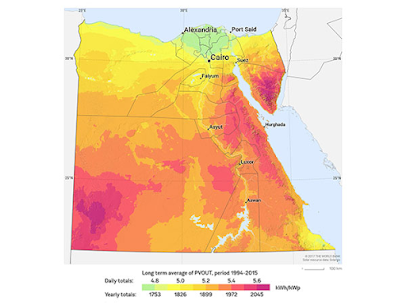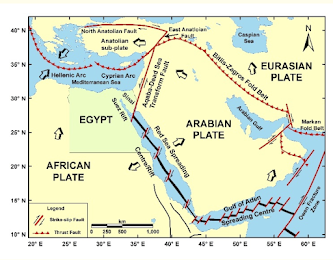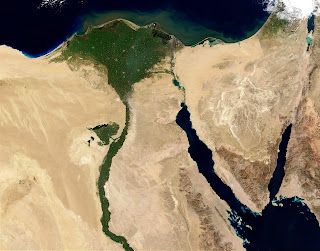Egypt Extreme Climate
When someone think about Africa, the first thing that crosses their minds is desert, Egypt is no exception, as 96% of Egypt's total area is desert. For this reason, Egypt has a hot deserted climate. Where it is generally extremely dry in every 96% of the country land , which the exception of the northern part of the Mediterranean coast, where this area receives rainfalls in winter. Receiving rain falls doesn't necessarily mean that the country doesn't face rarity of rain. Egypt is known with extreme heat during summer months, where the northern coast has a more moderate daytime temperature during summer.
One of the most famous climates of Egypt are prevailing wind. The prevailing wind that comes from the Mediterranean Sea, continuously blows over the northern cost due to the un-interruption of an eventual mountain range, and for this reason the northern coast part of the country has moderates temperature throughout the year. It is important to note that the temperatures in the northern coast part fall from the average of 73.4 degrees in summer time to 49.1 degrees during winter.
This moderate, good weather in the northern coast changes when it comes to the interior, where the areas are far away from the cooling northerly winds, and they become leaning towards and extreme hot climate in the central and southern parts of the country, even nighttime temperatures are very hot, especially during summer, where the "Average High temperatures can definitely exceed 110 degrees. Some of the areas that you became aware of during this semester as i mention them always are "Aswan, Luxor, Asyut" and Sohag, where these cities are located in the deserts of Egypt.
Another Extreme weather factor, is the Sand Storms. Every Year, and especially from March to May, and extreme hot, dry and Dusty wind blows from the south part of the country. This wind is called "Khamsiin" and Khamsin in Arabic means fifty (50) referring to 50 days of extreme weather, where it usually shows up at the same time of the years and last at least fifty days. When the flow of dry air continuously blows over vast desert regions, it picks up fine sand and dust particles and finally results in a dusty wind which is generally felt in the periphery of the desert. When this wind blows over Egypt, it causes high temperatures to soar temporarily at dangerous levels, usually over 113 °F the relative humidity levels to drop under 5%. The khamsiin causes sudden, early heat waves and the absolute highest temperature records in Egypt.
The Egyptian government is launching projects to protect the coasts and reduce the severity of heatwaves and droughts, expand the construction of seawater desalination plants and widen the scope of protected farming to cushion the effects of extreme weather conditions on agricultural produce - and to save water. Egyptian authorities are also lining tens of thousands of miles of irrigation canals to reduce water leakage and ensure that irrigation water reaches the farthest farmland in the Egyptian countryside.
Resources:
- "Cairo (A) Climate Normals 1961–1990". National Oceanic and Atmospheric Administration. Retrieved April 14, 2014.
- ^ Cappelen, John; Jensen, Jens. "Egypten - CairoClimate Data for Selected Stations (1931-1960). Danish Meteorological Institute. Retrieved April 14, 2014.
Egypt: How 'smart crops' are used to mitigate effects of climate change. Middle East Eye. (n.d.). Retrieved October 25, 2022, from https://www.middleeasteye.net/news/egypt-smart-crops-climate-change-mitigate-effects
World Bank Climate Change Knowledge Portal. Climatology | Climate Change Knowledge Portal. (n.d.). Retrieved October 25, 2022, from https://climateknowledgeportal.worldbank.org/country/egypt/climate-data-historical#:~:text=Egypt's%20climate%20is%20dry%2C%20hot,change%20with%20the%20prevailing%20winds.








Hi Charbel,
ReplyDeleteYour post was very interesting! I could not imagine having to deal with 113 degree weather. I can barely stand California's 100 weather- let alone adding another 13 degrees to that. I think that it is good that the government is stepping in to help agriculture because I am sure that it is hard on farmers to have to deal with those extreme temperatures in the desert (meaning there isn't much water to begin with). Overall, I really enjoyed reading your post! Keep up the great work.